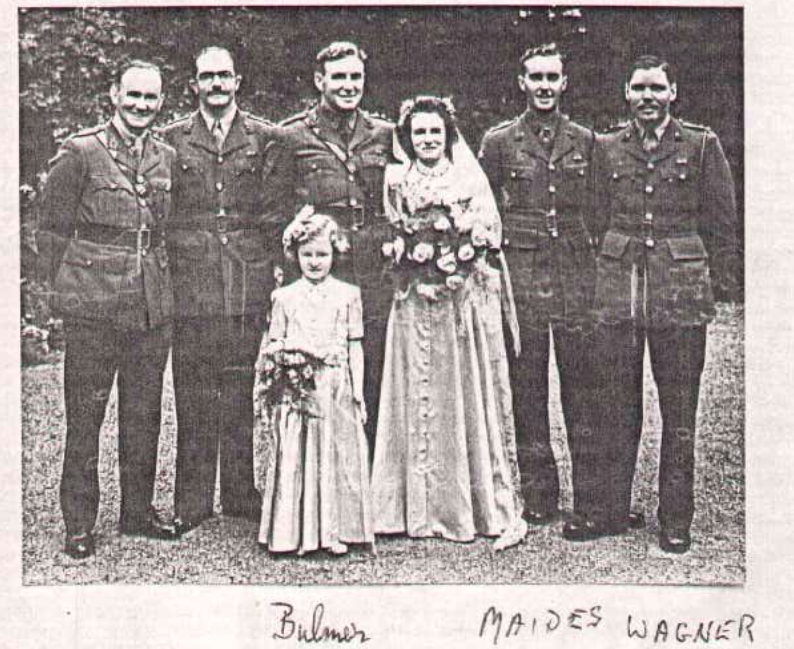Michael Wagner
(1917-2017)
MBE, The Welch Regiment
Major Michael (Mick) Wagner of the Welch Regiment was captured with his two companions, John Maides and Bill Bulmer, on the front between Benghazi and Agebadia, Libya, on 30 January 1942. He was 24 years old. After long imprisonment in PG 32, Padula (Salerno), he was transferred, in July 1943, to PG 19, Bologna, where he remained until the Armistice:
We were playing baseball when three Italian officers came into the camp and asked to see the SBO. Ten minutes later he announced that there had been an armistice. It was decided that a Red Cross food parcel would be issued per man and that we should pack a few necessities to be ready to move out of the camp at dawn the next morning. Unfortunately, things did not work out as planned.
The Germans quickly took control of the camp at dawn on 9 September and, probably informed by the Italian officers about the chance of a mass breakout, encircled it with troops and vehicles, making escape impossible. Mick, John and Bill, with Peter Laider and Alistair Capes, discussed what to do:
Of one thing we were certain: we had no desire to spend any longer as prisoners than we could help and, if we did not get away in the next few days, we would find ourselves in Germany. Then there would be even less chance of escape than there had been before the armistice in Italy, for we were pretty certain that the camp would be moved in the next few days. We had no time to waste.
Bill (third from the left) and John (second from the right) on the day of Bill’s marriages, right after they returned to England, June 1943.
The Germans did not waste time before evacuating the prisoners. The five men decided to use a small trapdoor in the ceiling of the wash house to hide in the crawl space. The plan worked, and they witnessed the progressive evacuation of the camp. They remained hidden for two days and then decided to attempt an escape, cutting the barbed wire, even though German patrols were still present.
They were in luck and managed to disappear in the night, finding refuge with the Medici family, who lived nearby and clothed and fed them. They did not have a compass or a map, but nevertheless, they left intending to reach the Republic of San Marino, where they hoped the Allies’ advance could overrun them. Along the way, the group split to avoid being spotted: Mick, John, and Bill formed one group, Peter and Alistair the other.
Mick’s journey through the Emilian farmland continued without obstacles, also thanks to the local farmers, who provided lodging and food: « We were in great spirits as we walked on through the vineyards mainly because we now realised that could hope for help from the country people.» After coming close to the town of Rimini, they reached San Marino:
After a few minutes of being watched by a group of San Marino people, they approached us cautiously to find out who we were. As soon as they were convinced that we were English, their reception was quite overwhelming. We were taken into a house and a bottle of sparkling Italian wine appeared. Everyone tried to pat us on the back, shake our hands and kiss us; they were all happy and laughing. […] We were told that arrangements had been made for us to stay on a farm not far away.
Mick and his comrades remained with this family for 12 days, helping with the work in the fields. However, their pleasant interlude was cut short when they learnt that the Germans had occupied San Marino. Thus, the three resumed their march, hoping to reach the South before winter.
We were a lot more confident now; we spoke better Italian and were in much better nick physically than when left Bologna. Our time with that pleasant family had done us a lot of good and we had put on weight, plus there would still be un-harvested grapes on the vines to eat as we went.
Near Cagli (Pesaro), they took a train which brought them to Sassoferato (Ancona). From there, they passed near Fabriano and reached the village of Collamato (Ancona), where they entered in contact with “Gigi” Cadorna, former lieutenant of the Italian Army, a native of Calabria and leader of the partisan band “tiger”, which had its operative zone in the San Cataldo area, near Esanatoglia (Macerata). This was a mixed band comprised of five Italians, a dozen Yugoslavians who had escaped from a civilian internment camp, and a South African, Bob Turner. The band had established its base in the sanctuary of San Cataldo, which dominated the valley from its position atop a cliff. There were also other partisan formations in the area, such as the group dell’Eremita, which had his base in Esanatoglia.
As October was coming to its end, Mick and his companions realised that Winter was coming: crossing the Gran Sasso mountains on their way towards the Allied lines would be incredibly dangerous. So, they decided to pass the winter in the area. The local population housed them, and they lived between San Cataldo, Esanatoglia, and Collamato until March 1944.
Mick recalls that he and his comrades were not thrilled by the prospect of taking part in partisan warfare, as their primary objective was crossing the frontline and going back home. They took part in sabotage activities, such as cutting telephone and electrical lines and slowing down German transports. However, they refused to engage the enemy directly, a type of action that, on the contrary, was sought after by the Yugoslavians. These two different ways of living as partisans soon caused frictions and misunderstandings, and Cadorna had to mediate often, but seldom with success.
We were not trained, equipped or indeed in the frame of mind to become heavily involved in terrorist-type activities behind the German lines. […] Furthermore, we believed, and were later to be proved right, that indiscriminate offensive action against the Germans would be bound to lead to reprisals against the local population who were befriending us.
Mick and his companions vehemently complained after the killing of two German soldiers, on 24 February 1944 [1], in Esanatoglia, carried by some Yugoslavians, as they feared the German reprisal. The Yugoslavian, in response, locked them in a room in the sanctuary for a few days. It was only thanks to Cadorna’s intervention that they regained their freedom. The band, however, was now divided. The three abandoned the area in secret, resuming their march.
We left San Cataldo in what must have been early April 1944, with mixed emotions. It had been an interesting, at times most exciting, and in all ways, a memorable four months. Had made a lot of friends locally and were sorry to be leaving the villagers who had helped us so generously. We were concerned, too, for their safety in the future. In a way, we were also sorry to be breaking company with the group with which we had shared so many experiences. This was certainly so in the case of Tenent Cadorna. Even amongst the Yugoslavs there were particular individuals, notably Dimetri (Pop) the cook, with whom we had struck up real friendship.
Mick’s group decided to head towards Fabriano, where they hoped they would meet another escaped British officer, David Williams, who had informed them in the previous months of the presence of a clandestine organisation bent on the evacuation of PoWs. Indeed, David provided them with instructions and an address where they would find help. Terefore, they started marching again, this time towards Ancona.
For this, we were conducted with great caution and as unobtrusively as possible, to an isolated house not very far away and taken into a small room past a fully armed guard who, to our amazement, was a soldier in British battle dress, bristling with weapons of every description. Lying on a bed in his pyjamas was the man we were to see. His battle dress tunic was over a nearby chair and his Sten gun and pistol etc. were well within in reach. It gave us an odd, but very reassuring feeling. The rank badges on the tunic were those of a major and though we never knew his name at the time, it seems without doubt that he was Jock McKee and working with N section of the organisation known as Mi9.
Frontispiece of Bill, John, and Mick’s memories.
The instructions they received told them to head to Grottazzolina (Fermo). From there, following the coastline, they would be evacuated by the sea at the end of April. «It was the best news we had in a long time, and our morale soared». However, this euphoria was short-lived. As the evacuation date approached, the weather worsened, making the trip by boat impossible. Their departure was thus delayed by one month—a bitter disappointment. The three lodged separately: Mick in an old mill, Bill and John hosted in a farmhouse.
Around 22 May 1944, the good news arrived: the mission in charge of bringing them home had departed. With a boat, the three reached Tremoli and, from there, Naples, where they faceed interrogation.
We sailed from Naples at the start of an uneventful passage for home. We were impatient to be on our way and longing to be in England again, but as we saw the coastline recede we felt some sort of nostalgia for what we were leaving behind. That all seemed another world now, but a bit of Italy had got into our blood.
During the following years, Mick, Bill and John came back often to Italy, to thank and greet those who helped them. They discovered, with sorrow, that their fears were correct: in Esanatoglia a plaque now remembers the men of the village killed in a reprisal after they had left.[2]
Linked camps
Sources:
- Roger Absalom, A Strange Alliance. Aspects of escape and survival in Italy 1943-45, Firenze, Olschki, 1991 (trad. it. L’alleanza inattesa. Mondo contadino e prigionieri alleati in fuga in Italia (1943-1945), Bologna, Pendagron, 2011);
- Giuseppe Millozzi, Prigionieri alleati: cattura, detenzione e fuga nelle Marche 1941-1944, Fondazione Ranieri di Sorbello, Perugia, 2007.
- Mick Wagner, Bill Blumer, John Maides, A long, long way to go home , [1990], private account: Monte San Martino Trust Archives: <https://archives.msmtrust.org.uk/pow-index/wagner-mick/>
- Atlante delle Stragi Naziste e Fasciste in Italia: http://www.straginazifasciste.it/?page_id=38&id_strage=536
Note:
[1] In quell’occasione due ufficiali delle SS tedesche, provenienti da Matelica, si erano recati presso la conceria di Esanatoglia quando erano stati attaccati dai partigiani. Presi alla sprovvista, uno è ucciso sul posto, l’altro rimasto ferito, viene catturato. Condotti in montagna, finiscono in una fossa comune. Il fatto mette in allarme il comando tedesco di Matelica che fino a quel momento non aveva mostrato grande attenzione per la vicina Esanatoglia. Per la vicenda e le successive conseguenze: Atlante delle Stragi Naziste e Fasciste in Italia: <http://www.straginazifasciste.it/?page_id=38&id_strage=536>
[2] Il riferimento è agli episodi del 1 aprile 1944, quando i nazifascisti realizzarono un rastrellamento in montagna nel corso del quale venne ucciso, in località Lentino, Alberico Pacini, giovane che dopo l’8 settembre aveva aderito alla lotta armata. Vennero fucilati sul muro della chiesa di Santa Maria anche Vito Pistola e Amos Ubaldini, due civili innocenti. La rappresaglia faceva seguito all’uccisione di due tedeschi da parte di uno dei gruppi partigiani della zona in data 24 febbraio 1944. Cfr. nota 1.


